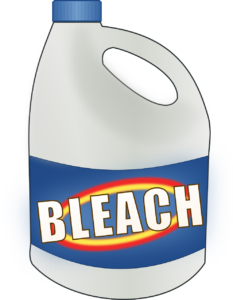
Burns from chemicals can happen anywhere — home, school or work — wherever chemicals are handled. What do you need to know?
Chemical burns are caused by what are known as “caustic” or corrosive substances. Caustic is defined as something that is “able to burn or corrode organic tissue by chemical action.”
 Corrosive substances can be found in many common products such as:
Corrosive substances can be found in many common products such as:
Chemical burns result when these corrosive substances come in contact with the skin, when breathing the noxious fumes or accidentally swallowing some of the substance. These burns can be severe; the longer the exposure, the more extensive the damage might be. Chemicals tend to “eat away” at the skin damaging deeper tissue. Depending on the chemical, the length of contact and concentration, these burns can result in serious, sometimes permanent, damage.
Chemical burns are classified like any other burn injury: first degree, second degree and third degree.
The most common symptoms of chemical burns include:
If the chemical was swallowed, you may experience:
Know what chemicals you could potentially be exposed to and have a treatment plan in place. In general, you want to:
Seek medical treatment immediately if:
Burn injuries — chemical or not — can be extremely painful and can take a long time to recover from. Serious burn injuries may require some form of rehabilitation and may leave permanent damage, such as some form of disfigurement or even amputation.
Severe burn injuries can require:
On the job, your first recourse is through workman’s compensation; however, sometimes burn injuries may be caused by the negligence of others. In those cases, you may be eligible to have your medical expenses taken care of by that negligent party. Examples of this may include:
When you need a personal injury lawyer in the Kansas City area, contact the lawyers at Nash & Franciskato for a free, no-obligation review of your case.
Our knowledgeable staff is available at (877) 284-6600.
If you would like to receive news and blog updates on a regular basis, sign up to receive our email newsletter. Your email address will only be used to send you our newsletter and respond to inquiries.
When you need a personal injury lawyer in the Kansas City area, contact the lawyers at Nash & Franciskato for a free, no-obligation review of your case.
Past results afford no guarantee of future results and each case is different and is judged on its own merits. The choice of a lawyer is an important decision and should not be based solely upon advertisements.